3-Nitrophenylboronic acid
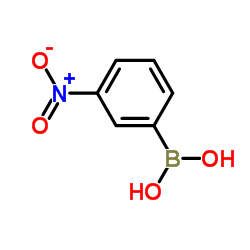
3-Nitrophenylboronic acid structure
|
Common Name | 3-Nitrophenylboronic acid | ||
|---|---|---|---|---|
| CAS Number | 13331-27-6 | Molecular Weight | 166.93 | |
| Density | 1.4±0.1 g/cm3 | Boiling Point | 363.3±44.0 °C at 760 mmHg | |
| Molecular Formula | C6H6BNO4 | Melting Point | 284-285 °C (dec.)(lit.) | |
| MSDS | Chinese USA | Flash Point | 173.5±28.4 °C | |
| Symbol |

GHS07 |
Signal Word | Warning | |
Use of 3-Nitrophenylboronic acid3-Nitrophenylboronic acid is a biochemical reagent that can be used as a biological material or organic compound for life science related research. |
| Name | 3-Nitrophenylboronic acid |
|---|---|
| Synonym | More Synonyms |
| Description | 3-Nitrophenylboronic acid is a biochemical reagent that can be used as a biological material or organic compound for life science related research. |
|---|---|
| Related Catalog |
| Density | 1.4±0.1 g/cm3 |
|---|---|
| Boiling Point | 363.3±44.0 °C at 760 mmHg |
| Melting Point | 284-285 °C (dec.)(lit.) |
| Molecular Formula | C6H6BNO4 |
| Molecular Weight | 166.93 |
| Flash Point | 173.5±28.4 °C |
| Exact Mass | 167.038986 |
| PSA | 86.28000 |
| LogP | 1.32 |
| Vapour Pressure | 0.0±0.9 mmHg at 25°C |
| Index of Refraction | 1.574 |
| InChIKey | ZNRGSYUVFVNSAW-UHFFFAOYSA-N |
| SMILES | O=[N+]([O-])c1cccc(B(O)O)c1 |
| Storage condition | 0-6°C |
| Water Solubility | soluble in hot water |
Synonym:None Known Section 2 - COMPOSITION, INFORMATION ON INGREDIENTS
Risk Phrases: 36/37/38 Section 3 - HAZARDS IDENTIFICATION EMERGENCY OVERVIEW
Irritating to eyes, respiratory system and skin. Potential Health Effects Eye: Causes eye irritation. May cause chemical conjunctivitis. Skin: Causes skin irritation. May be harmful if absorbed through the skin. Ingestion: May cause irritation of the digestive tract. May be harmful if swallowed. Inhalation: Causes respiratory tract irritation. May be harmful if inhaled. Can produce delayed pulmonary edema. Chronic: No information found. Section 4 - FIRST AID MEASURES Eyes: Immediately flush eyes with plenty of water for at least 15 minutes, occasionally lifting the upper and lower eyelids. Get medical aid. Skin: Get medical aid. Flush skin with plenty of water for at least 15 minutes while removing contaminated clothing and shoes. Wash clothing before reuse. Ingestion: Never give anything by mouth to an unconscious person. Get medical aid. Do NOT induce vomiting. If conscious and alert, rinse mouth and drink 2-4 cupfuls of milk or water. Wash mouth out with water. Inhalation: Remove from exposure and move to fresh air immediately. If not breathing, give artificial respiration. If breathing is difficult, give oxygen. Get medical aid. Do NOT use mouth-to-mouth resuscitation. Notes to Physician: Treat symptomatically and supportively. Section 5 - FIRE FIGHTING MEASURES General Information: As in any fire, wear a self-contained breathing apparatus in pressure-demand, MSHA/NIOSH (approved or equivalent), and full protective gear. During a fire, irritating and highly toxic gases may be generated by thermal decomposition or combustion. Extinguishing Media: Use water spray, dry chemical, carbon dioxide, or chemical foam. Section 6 - ACCIDENTAL RELEASE MEASURES General Information: Use proper personal protective equipment as indicated in Section 8. Spills/Leaks: Vacuum or sweep up material and place into a suitable disposal container. Clean up spills immediately, observing precautions in the Protective Equipment section. Avoid generating dusty conditions. Provide ventilation. Section 7 - HANDLING and STORAGE Handling: Minimize dust generation and accumulation. Avoid breathing dust, vapor, mist, or gas. Avoid contact with eyes, skin, and clothing. Keep container tightly closed. Avoid ingestion and inhalation. Use with adequate ventilation. Wash clothing before reuse. Storage: Store in a cool, dry place. Store in a tightly closed container. Section 8 - EXPOSURE CONTROLS, PERSONAL PROTECTION Engineering Controls: Facilities storing or utilizing this material should be equipped with an eyewash facility and a safety shower. Use adequate ventilation to keep airborne concentrations low. Exposure Limits CAS# 13331-27-6: Personal Protective Equipment Eyes: Wear appropriate protective eyeglasses or chemical safety goggles as described by OSHA's eye and face protection regulations in 29 CFR 1910.133 or European Standard EN166. Skin: Wear appropriate protective gloves to prevent skin exposure. Clothing: Wear appropriate protective clothing to prevent skin exposure. Respirators: Follow the OSHA respirator regulations found in 29 CFR 1910.134 or European Standard EN 149. Use a NIOSH/MSHA or European Standard EN 149 approved respirator if exposure limits are exceeded or if irritation or other symptoms are experienced. Section 9 - PHYSICAL AND CHEMICAL PROPERTIES Physical State: Powder Color: white - off-white Odor: odorless pH: Not available. Vapor Pressure: Not available. Viscosity: Not available. Boiling Point: Not available. Freezing/Melting Point: 289 - 291 deg C Autoignition Temperature: Not available. Flash Point: Not available. Explosion Limits, lower: Not available. Explosion Limits, upper: Not available. Decomposition Temperature: Solubility in water: Soluble in hot water. Specific Gravity/Density: Molecular Formula: C6H6BNO4 Molecular Weight: 166.93 Section 10 - STABILITY AND REACTIVITY Chemical Stability: Stable under normal temperatures and pressures. Conditions to Avoid: Dust generation. Incompatibilities with Other Materials: Strong oxidizing agents, strong acids. Hazardous Decomposition Products: Nitrogen oxides, carbon monoxide, carbon dioxide, boron oxides. Hazardous Polymerization: Will not occur. Section 11 - TOXICOLOGICAL INFORMATION RTECS#: CAS# 13331-27-6: CY8980000 LD50/LC50: Not available. Carcinogenicity: 3-Nitrophenylboronic acid - Not listed by ACGIH, IARC, or NTP. Other: See actual entry in RTECS for complete information. Section 12 - ECOLOGICAL INFORMATION Section 13 - DISPOSAL CONSIDERATIONS Dispose of in a manner consistent with federal, state, and local regulations. Section 14 - TRANSPORT INFORMATION IATA Not regulated as a hazardous material. IMO Not regulated as a hazardous material. RID/ADR Not regulated as a hazardous material. Section 15 - REGULATORY INFORMATION European/International Regulations European Labeling in Accordance with EC Directives Hazard Symbols: XI Risk Phrases: R 36/37/38 Irritating to eyes, respiratory system and skin. Safety Phrases: S 26 In case of contact with eyes, rinse immediately with plenty of water and seek medical advice. S 37/39 Wear suitable gloves and eye/face protection. WGK (Water Danger/Protection) CAS# 13331-27-6: No information available. Canada CAS# 13331-27-6 is listed on Canada's DSL List. CAS# 13331-27-6 is not listed on Canada's Ingredient Disclosure List. US FEDERAL TSCA CAS# 13331-27-6 is listed on the TSCA inventory. SECTION 16 - ADDITIONAL INFORMATION N/A |
CHEMICAL IDENTIFICATION
HEALTH HAZARD DATAACUTE TOXICITY DATA
|
| Symbol |

GHS07 |
|---|---|
| Signal Word | Warning |
| Hazard Statements | H315-H319-H335 |
| Precautionary Statements | P261-P305 + P351 + P338 |
| Personal Protective Equipment | dust mask type N95 (US);Eyeshields;Gloves |
| Hazard Codes | Xi:Irritant |
| Risk Phrases | R36/37/38 |
| Safety Phrases | S26-S37/39 |
| RIDADR | NONH for all modes of transport |
| WGK Germany | 3 |
| RTECS | CY8980000 |
| HS Code | 29310095 |
|
~90% 
3-Nitrophenylbo... CAS#:13331-27-6 |
| Literature: Pennington, Thomas E.; Kardiman, Cynantya; Hutton, Craig A. Tetrahedron Letters, 2004 , vol. 45, # 35 p. 6657 - 6660 |
|
~46% 
3-Nitrophenylbo... CAS#:13331-27-6 |
| Literature: Morgan, Jacqueline; Pinhey, John T. Journal of the Chemical Society, Perkin Transactions 1: Organic and Bio-Organic Chemistry (1972-1999), 1990 , p. 715 - 720 |
|
~12% 
3-Nitrophenylbo... CAS#:13331-27-6 |
| Literature: Li, Wenjie; Nelson, Dorian P.; Jensen, Mark S.; Hoerrner, R. Scott; Cai, Dongwei; Larsen, Robert D.; Reider, Paul J. Journal of Organic Chemistry, 2002 , vol. 67, # 15 p. 5394 - 5397 |
|
~% 
3-Nitrophenylbo... CAS#:13331-27-6 |
| Literature: Journal of the American Chemical Society, , vol. 53, p. 713 |
| Precursor 3 | |
|---|---|
| DownStream 10 | |
| HS Code | 2931900090 |
|---|---|
| Summary | 2931900090. other organo-inorganic compounds. VAT:17.0%. Tax rebate rate:13.0%. Supervision conditions:AB(certificate of inspection for goods inward,certificate of inspection for goods outward). MFN tariff:6.5%. General tariff:30.0% |
|
Boronate affinity-assisted MEKC separation of highly hydrophilic urinary nucleosides using imidazolium-based ionic liquid type surfactant as pseudostationary phase.
Electrophoresis 36(5) , 784-95, (2015) In this work, we extend our investigations regarding the separation of urinary nucleosides by MEKC with the ionic liquid type surfactant 1-tetradecyl-3-methylimidazolium bromide (C14MImBr). We study t... |
|
|
A pharmacological MRI assessment of dizocilpine (MK-801) in the 3-nitroproprionic acid-lesioned rat.
Neurosci. Lett. 444(1) , 42-7, (2008) The NMDA-antagonist dizocilpine (MK-801) is known to have dissociative, neurotoxic and neuroprotective properties. Although its neuroprotective properties are well documented, at present only ex vivo ... |
|
|
Boronic acid catalyzed ene carbocyclization of acetylenic dicarbonyl compounds.
Chem. Commun. (Camb.) 46 , 2191, (2010) The discovery and development of an efficient ene carbocyclization of 1,3-dicarbonyl compounds bearing pendent terminal alkyne substituents under 3-nitrobenzeneboronic acid catalysis is described. The... |
| 3-Nitrophenylboronic acid |
| (3-Nitrophenyl)boronic acid |
| MFCD00007193 |
| Boronic acid, B-(3-nitrophenyl)- |
| 3-Nitrobenzeneboronic acid |
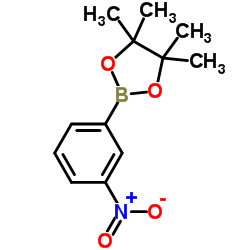

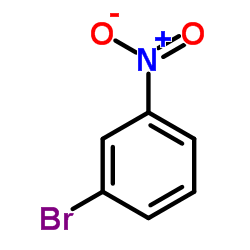
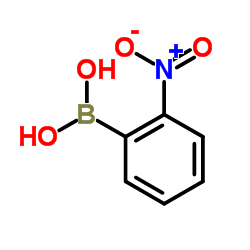
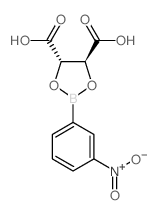 CAS#:1072944-27-4
CAS#:1072944-27-4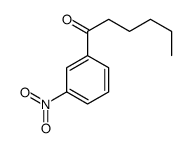 CAS#:105902-68-9
CAS#:105902-68-9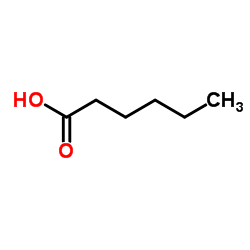 CAS#:142-62-1
CAS#:142-62-1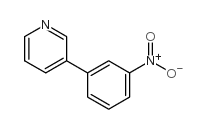 CAS#:4282-50-2
CAS#:4282-50-2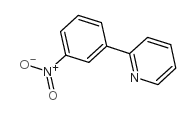 CAS#:4253-79-6
CAS#:4253-79-6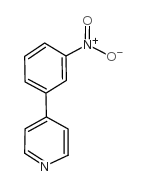 CAS#:4282-48-8
CAS#:4282-48-8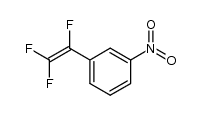 CAS#:105436-15-5
CAS#:105436-15-5 CAS#:98-95-3
CAS#:98-95-3![Methyl 3'-nitro-[1,1'-biphenyl]-3-carboxylate structure](https://image.chemsrc.com/caspic/206/149506-24-1.png) CAS#:149506-24-1
CAS#:149506-24-1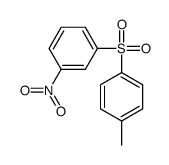 CAS#:141573-12-8
CAS#:141573-12-8
